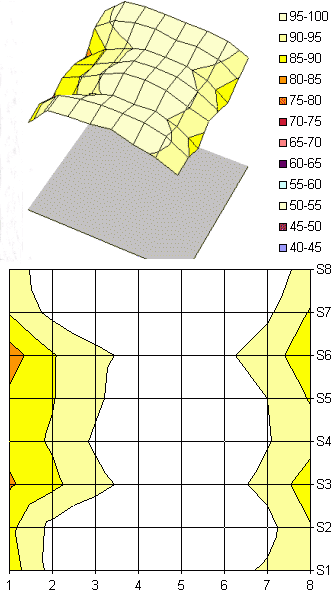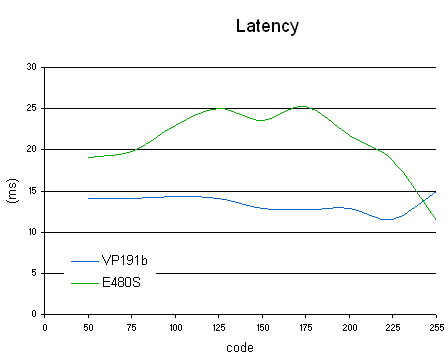Do The New 19" LCDs Pass Muster?
Spatial Uniformity
The panel was fairly uniform, even better than average, with the values grouped in the 100-85% range. The fact that the brightness remained the same on the upper and the lower part of the panel is another aspect to be appreciated; the screen was less bright around the edges, but that's not that much of a problem. The panel's profile correlated closely with our measurements on the Hyundai L90D+, which uses the same panel.
Fairly Fast
Here too the test went well. Like all electronic components, LCD panels are specified at maximum, minimum, and typical performance. When a monitor manufacturer buys panels from a supplier, both parties commit to a typical performance value, as well as upper and lower tolerances. Anything that falls within the specification range is delivered to the monitor manufacturer. In this case, the panel showed a response deviation of approximately 5 to 10%.
Once again these results can be compared to the ones for the L90D+. In the worst case, latency reached 25.5 ms. The ISO latency wasn't exactly 8 ms; we measured 11 ms (as on the L90D+). To log 8 ms, the panel had to be pushed to its limit with the contrast set to the maximum - that delivered the promised 8 ms ISO, but the image was terrible.
Get Tom's Hardware's best news and in-depth reviews, straight to your inbox.

